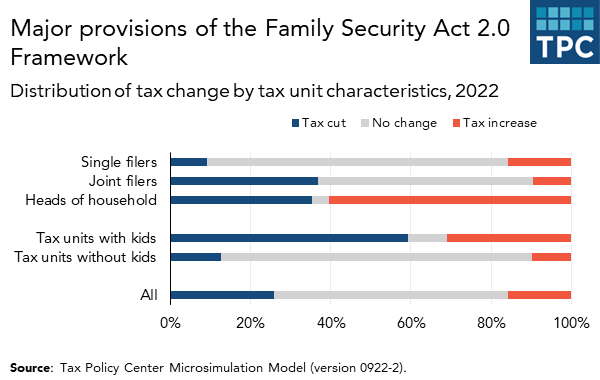Examining the Tax Rules at Risk in SCOTUS Moore v. US Case
Later this year, the US Supreme Court will hear Moore v. United States, a case in which the plaintiffs are challenging the constitutionality of Section 965 of the Internal Revenue Code. This provision, enacted in the 2017 Tax Cuts and Jobs Act (TCJA), imposes a transition tax on undistributed profits accrued by US Controlled Foreign Corporations (CFCs) between 1986 and the end of 2017.
A ruling in Moore that limits the taxation of unrealized income could potentially nullify other longstanding portions of the tax code. A new TPC paper examines some of these provisions and the revenue and distributional implications of invalidating them.
At the core of the dispute is the interpretation of the 16th Amendment to the US Constitution, which grants to Congress the power to “lay and collect taxes on income, from whatever source derived, without apportionment among the several states and without regard to any census or enumeration.”
The plaintiffs in Moore claim that the tax imposed by Section 965 is unconstitutional because the undistributed profits they accrued in a CFC do not meet the definition of income under the 16th Amendment. Although the plaintiffs limit their complaint to the transition tax, many organizations have submitted amicus briefs in their support, arguing the 16th Amendment does not apply to any unrealized income – or gains that have accrued to a taxpayer, but have not yet been received in the form of a cash distribution or receipt from selling an asset.
In contrast, public finance academics and government agencies treat income as an accrual concept. They define annual income to include all increases in the value of a taxpayer’s assets during a year, without regard to whether the taxpayer converted the gain to cash by selling the asset. Financial accounting rules used for reporting a firm’s profits to its shareholders are also based on accrual concepts.
Many provisions in the tax code currently exempt or defer unrealized income from tax. For example, capital gains are usually taxable only when realized by sale or other disposition. This is largely for reasons of administrative convenience, illiquidity of assets, or where, in the absence of market transactions, it is difficult measure changes in the value of assets.
But there are many exceptions to the realizations rule. These exist to limit tax avoidance. In addition, there are also many rules that “look through” intermediary organizations to include their income in the income of their owners even when the owners do not receive a distribution. An example is the current inclusion in taxable income of some foreign-source income that US taxpayers accrue within CFCs.
TPC’s paper examines six provisions in current law that tax unrealized or undistributed income:
- The Section 965 transition tax
- Taxation of Global Intangible Low Tax Income (GILTI)
- Taxation of certain forms of passive and other easily moveable income of CFCs (Subpart F income)
- The minimum tax on book income of US corporations
- The taxation of undistributed income of partnerships and S corporations
- Rules for taxing accrued interest on original issue discount bonds
We conservatively estimate that federal receipts would have been permanently lower by $87 billion per year in 2024 and $125 billion per year in 2028 if these provisions were not part of the federal income tax code (the higher 2028 figure mostly reflects the expiration of the TCJA individual income tax rate cuts and the 20 percent deduction for qualified business income, as well as the scheduled phase in of a higher tax rate on GILTI).
Behavioral responses could make revenue losses from repealing these provisions many times larger than these figures. These responses include, but are not limited to, increased shifting of corporate profits to low-tax foreign countries, higher retained earnings by partnerships and S corporations, and an increased use of pass-through business structures instead of C corporations.
The types of income that would escape tax if Congress cannot tax unrealized income are highly concentrated among upper income taxpayers. Under current law, TPC estimates that, in 2024, taxpayers in the top 1 percent of the income distribution (who receive 16 percent of all income) will pay 50 percent of all taxes on interest income, 77 percent of taxes on capital gains and partnership income, and 72 percent of taxes on S corporation income.
This research expresses no opinion on the constitutional issues raised by Moore and makes no forecast on how the Supreme Court will rule. Depending on the wording of any decision, some of the provisions discussed here may be retained wholly or in part or may become subject to further litigation.
But any Court decision in Moore that casts doubt on the constitutionality of taxing unrealized income will create considerable uncertainty for taxpayers and the government. It could lead to substantial revenue losses and embolden taxpayers to take more aggressive positions on their unrealized income, in the hope that future court rulings sanction their tax planning choices. In the long run, it could also create serious challenges for lawmakers hoping to maintain the progressivity of the federal income tax.






